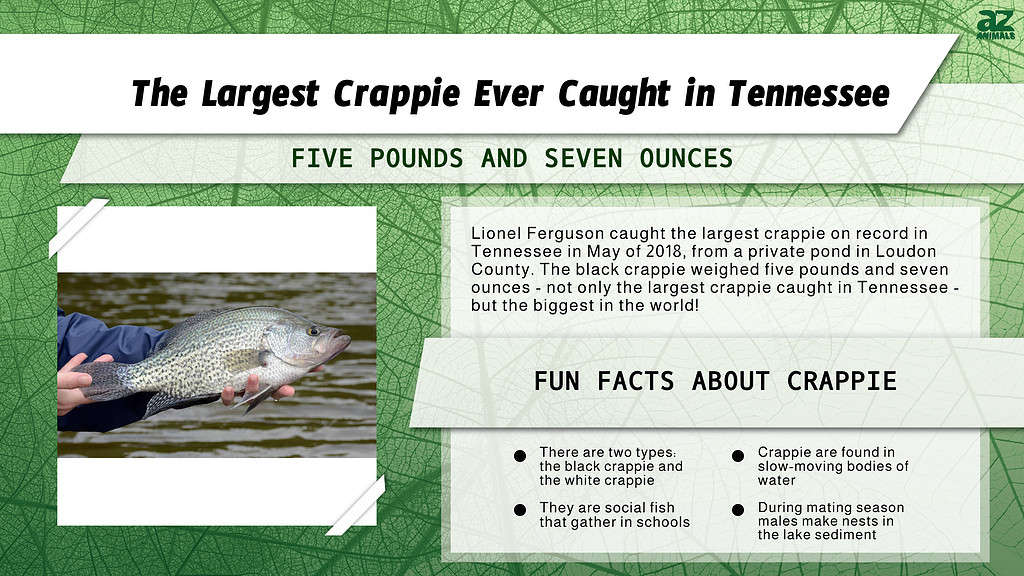
Introduction
While Tennessee is a landlocked state, the area is home to many different bodies of water. Rivers, springs, ponds, and lakes cover the landscape from east to west. These bodies of water provide wonderful opportunities for water activities such as swimming, sailing, tubing, and more. However, beneath the surfaces of these waters lives an abundance of wildlife.
Many different aquatic creatures can be found in Tennessee waters, making it a great spot for people who love to fish. One species of fish, the crappie, is a common catch in the Tennessee area.
While these fish are fairly common, one crappie caught in Tennessee was extremely special. Keep reading to learn about the largest crappie ever caught in Tennessee!
Overview: Crappie
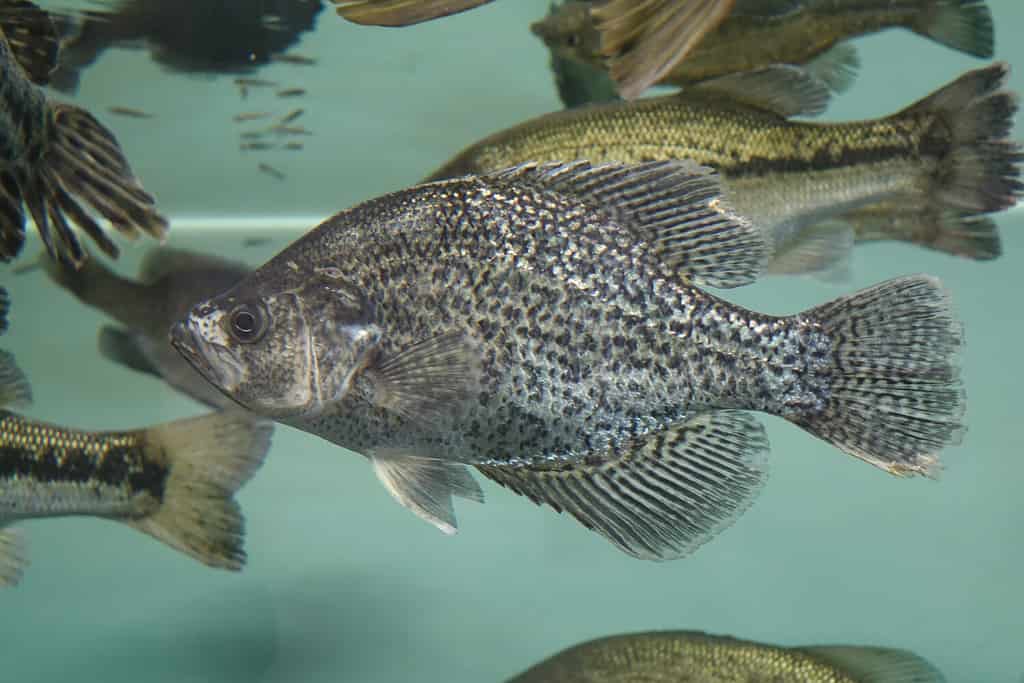
Crappies often gather in large groups called schools
©Wirestock Creators/Shutterstock.com
Native to the eastern United States, crappies are freshwater fish found in lakes, ponds, reservoirs, and other slow-moving bodies of water. While crappies are usually thought of as one species of fish, there are two types: the black crappie and the white crappie. These fish often gather in large groups called schools under the cover of vegetation and fallen trees. Here is a more in-depth look at crappies and their characteristics.
Appearance
Crappies are deep-bodied fish, which means that their bodies are much longer than they are wide. Other deep-bodied fish include angelfish and butterflyfish. Crappies typically measure about a foot in length and weigh around four pounds. While black and white crappies have similar sizes, they can be distinguished by their coloring and dorsal spines.
Black crappies have dark-colored speckles and dots on their bodies, while white crappies typically have lighter-colored bodies decorated with vertical bars. In addition to coloring, the two types of crappies differ in the number of their dorsal spines. Black crappies have between seven to eight spines in their dorsal, while white crappies only have six.
Diet
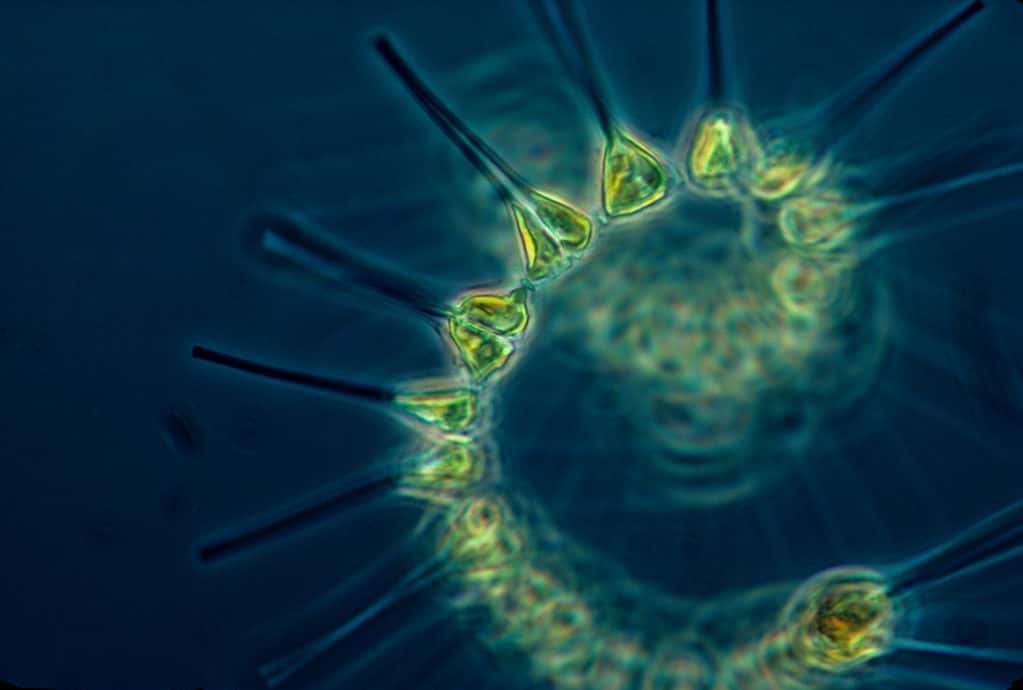
Young crappies eat zooplankton and other microscopic crustaceans.
©Porco_Rosso/Shutterstock.com
Crappies are far from the biggest fish in their habitat, so they have limited options for eating. Typically, young crappies will eat zooplankton and other microscopic crustaceans. When they get slightly older, crappies will begin feeding on threadfin and insect larvae, such as mayflies. As crappies reach full size, their food options increase. Adult crappies eat small fish like minnows, and can even eat other crappies and other fish small enough to swallow.
Behavior
Crappies are social creatures that often congregate in large groups called schools along the shallow edges of a body of water. These schools are popular spots for fishermen to cast their lines in hopes of catching several of the fish. Crappies are fairly curious fish, inspecting foreign objects in clear waters.
However, they are also cautious and usually spy on objects from a safe distance, which can be frustrating to fishermen. These fish are active at night when they will move towards lights and shallow waters in search of food. During the spring months when the fish are mating, male crappies can become extremely aggressive, striking at any potential threat that comes near their nests.
Life Cycle
Every spring, the crappie mating season begins. To prepare for this, male crappies stir up sediment and mud at the bottom of the body of water they are in. This activity creates nests, which the females then visit. Female crappies can visit several nests, releasing their eggs into the water at the same time the male crappie releases his milt. After this process, the female crappie leaves the male to defend his nest.
Over the next five days or so, the male crappie diligently guards his nest against predators and other fish to allow the crappie eggs to grow. After the juvenile crappies hatch, they stay in the nest for several days to orient themselves to their new surroundings.
The juvenile crappies then begin to move to shallow waters with plenty of shelter and feed to grow. After around three years have passed, the crappies reach full maturity. While these fish typically live for around seven years in the wild, the oldest reported age of crappie was 15 years.
The Largest Crappie Ever Caught in Tennessee
While crappies typically reach a maximum of four pounds, one crappie in Tennessee was significantly heavier. In May of 2018, Lionel Ferguson caught the largest crappie on record in Tennessee from a private pond in Loudon County. Ferguson had caught many large crappies before but had no idea his catch was the largest in the state.
After weighing the fish on a professional scale and doing a DNA test to confirm it wasn’t a hybrid, the Tennessee Wildlife Authority had some great news for Ferguson. The crappie was not only the largest ever caught in Tennessee, but the largest in the entire world!
The fish was black crappie and weighed five pounds and seven ounces. For reference, that is as big as a bag of potatoes. The largest white crappie caught in the state was only slightly smaller. Caught in April of 1968 by Bill Allen in Garner Brown’s Pond, the fish weighed five pounds and one ounce.
Other Large Types of Fish in Tennessee
While the crappie caught in 2018 was certainly the largest of its species, there are many other types of fish in Tennessee that are much larger. Here are some of the largest kinds of fish that can be found in the state of Tennessee.
Lake Sturgeon
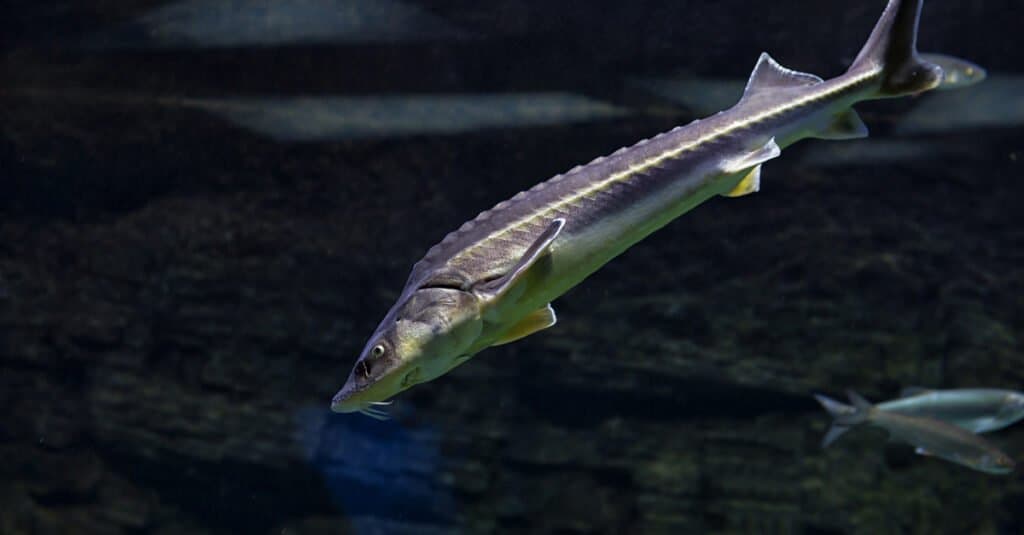
These fish are greenish-grey in color with long snouts and whisker-like organs on either side of their mouths.
©Galina Savina/Shutterstock.com
Lake sturgeons can be massive, measuring up to nine feet in length and weighing as much as 275 pounds. These fish are greenish-grey in color with long snouts and whisker-like organs on either side of their mouths. They use these whiskers to detect prey in deep waters. Lake sturgeons are carnivores eating all kinds of creatures that dwell at the bottom of the lake. In addition to their incredible size, these creatures can also live for a very long time. Male lake sturgeons often live around 55 years, and females can reach a staggering 150 years of age.
Blue Catfish

These fish can grow up to five feet in length, and weigh more than 100 pounds.
©Thomsonmg2000, cropped and adjusted by Kostka Martin / CC0 – License
Blue catfish are native to many rivers in the south and have been stocked for fishing in almost 20 states. These fish can grow up to five feet in length, and weigh more than 100 pounds. They have a silvery-blue coloring with white undersides and lack scales on their skin. Blue catfish can live up to 20 years in the wild, feeding off of fish and crustaceans living in their habitats. The largest blue catfish ever caught in Tennessee was pulled from the Barkley Reservoir by Micka Burkhart in September of 2022. The monster of a fish weighed an impressive 118 pounds, which is almost eight times heavier than a bowling ball!
Paddlefish
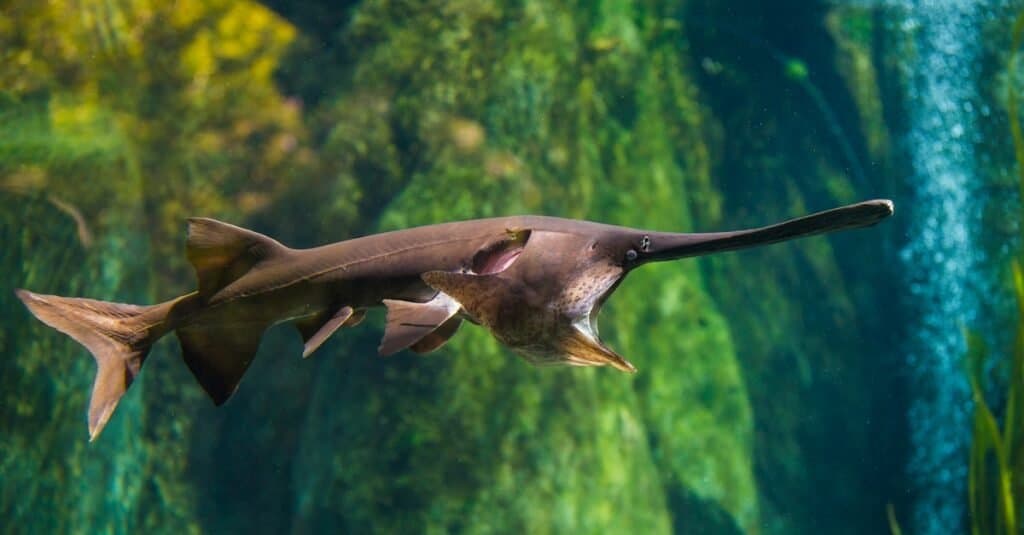
These fish can live up to 30 years in the wild.
©Saran Jantraurai/Shutterstock.com
Paddlefish are freshwater fish named after their long, paddle-shaped snouts. These fish weigh around 40 pounds on average and can grow up to seven feet in length. The paddlefish is rarer than other types of fish in Tennessee and was recently classified as a vulnerable species by the International Union for Conservation of Nature. Paddlefish live up to 30 years in the wild. Because they have no teeth, they feed off of tiny plants and small animals in the water they pick up by holding their mouths open. The largest paddlefish caught in Tennessee weighed 149 pounds. This huge creature was caught by Henry Dyer in April of 2023 in the Cherokee Reservoir.
The photo featured at the top of this post is © iStock.com/bbevren
Thank you for reading! Have some feedback for us? Contact the AZ Animals editorial team.






